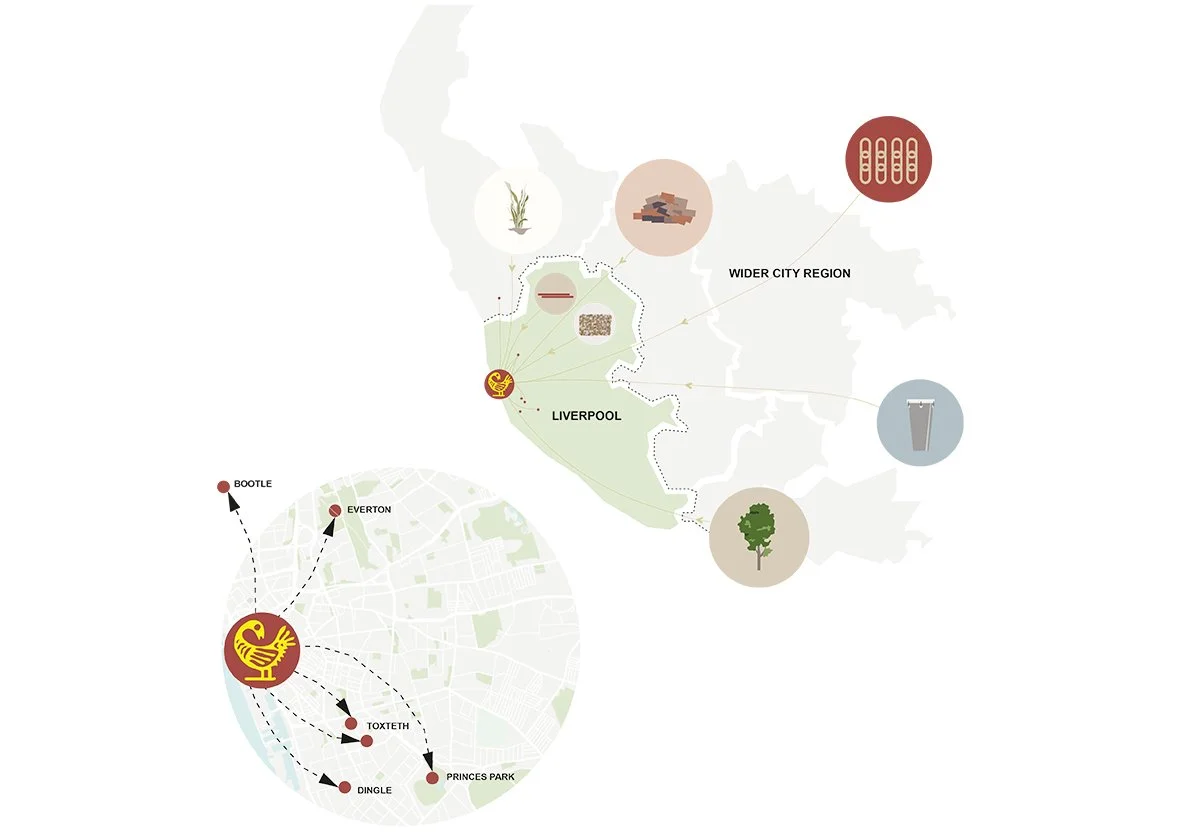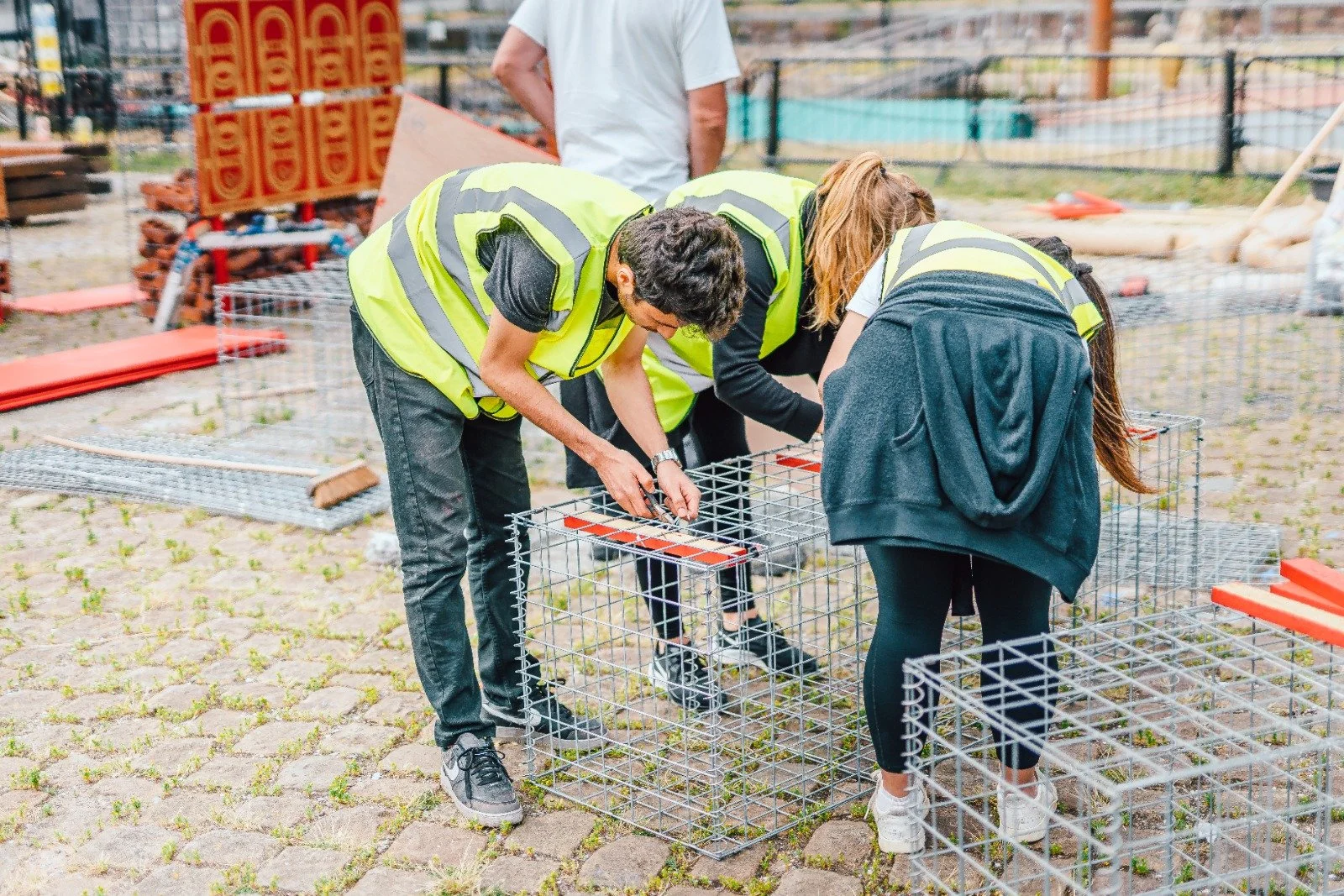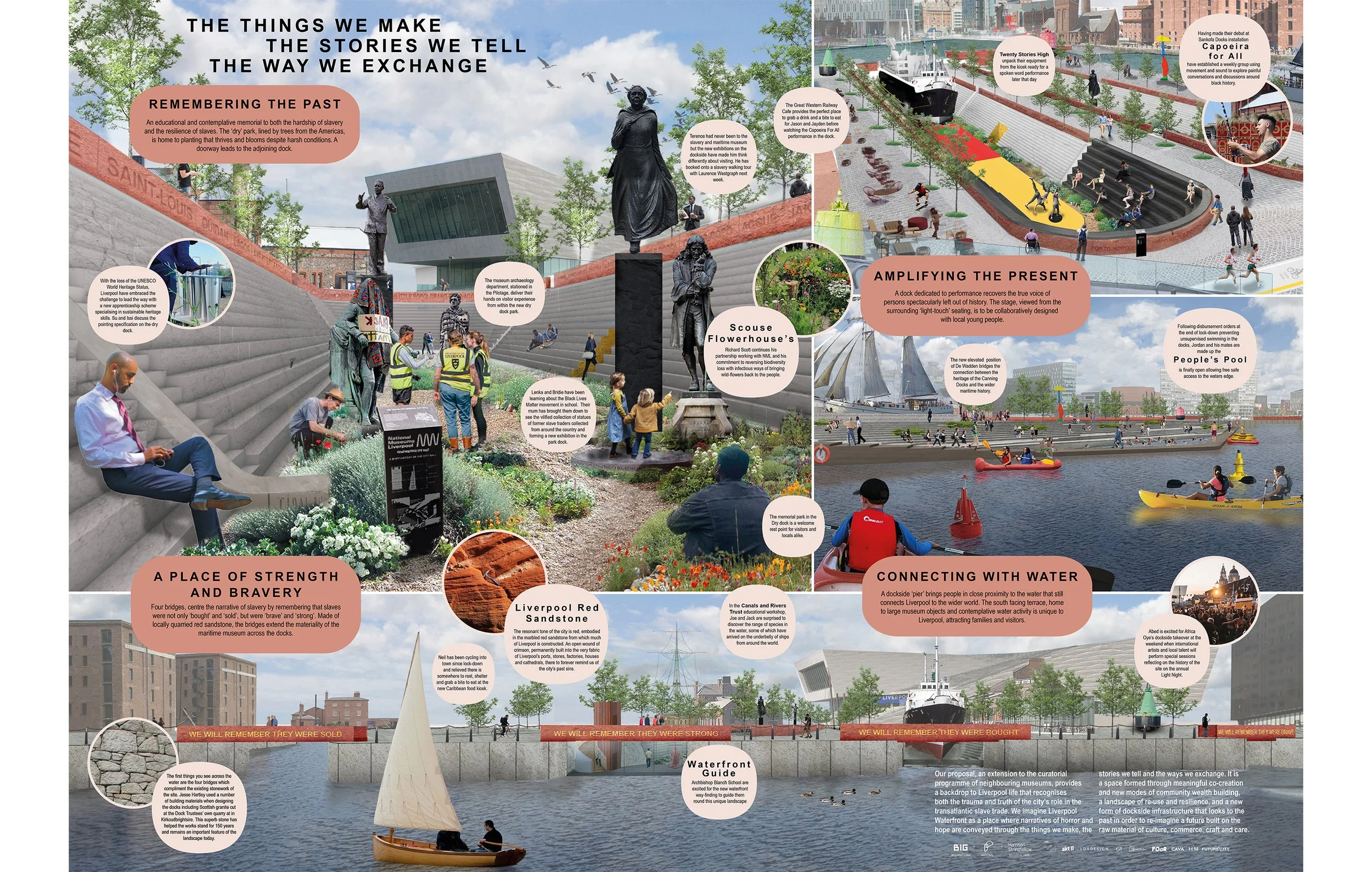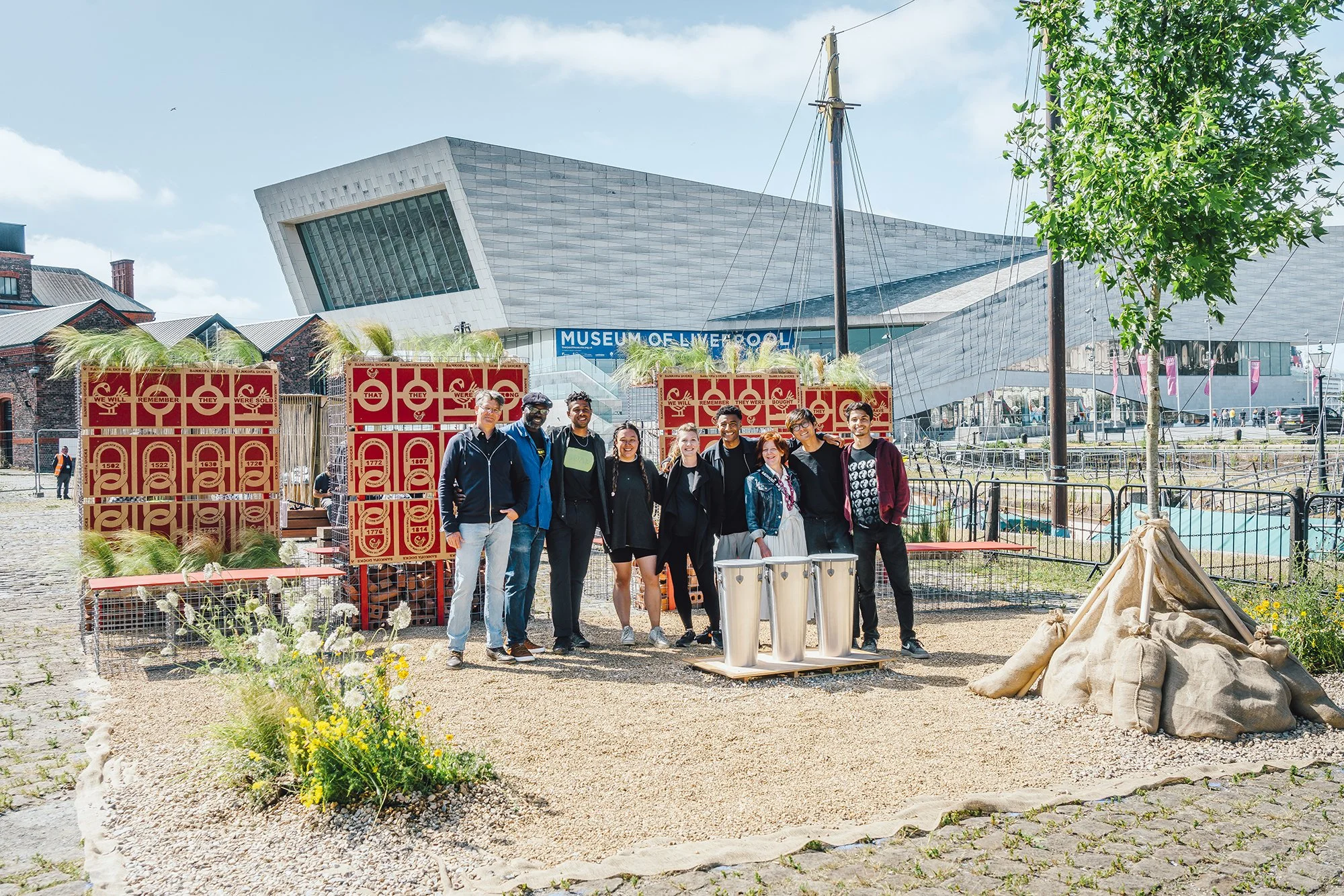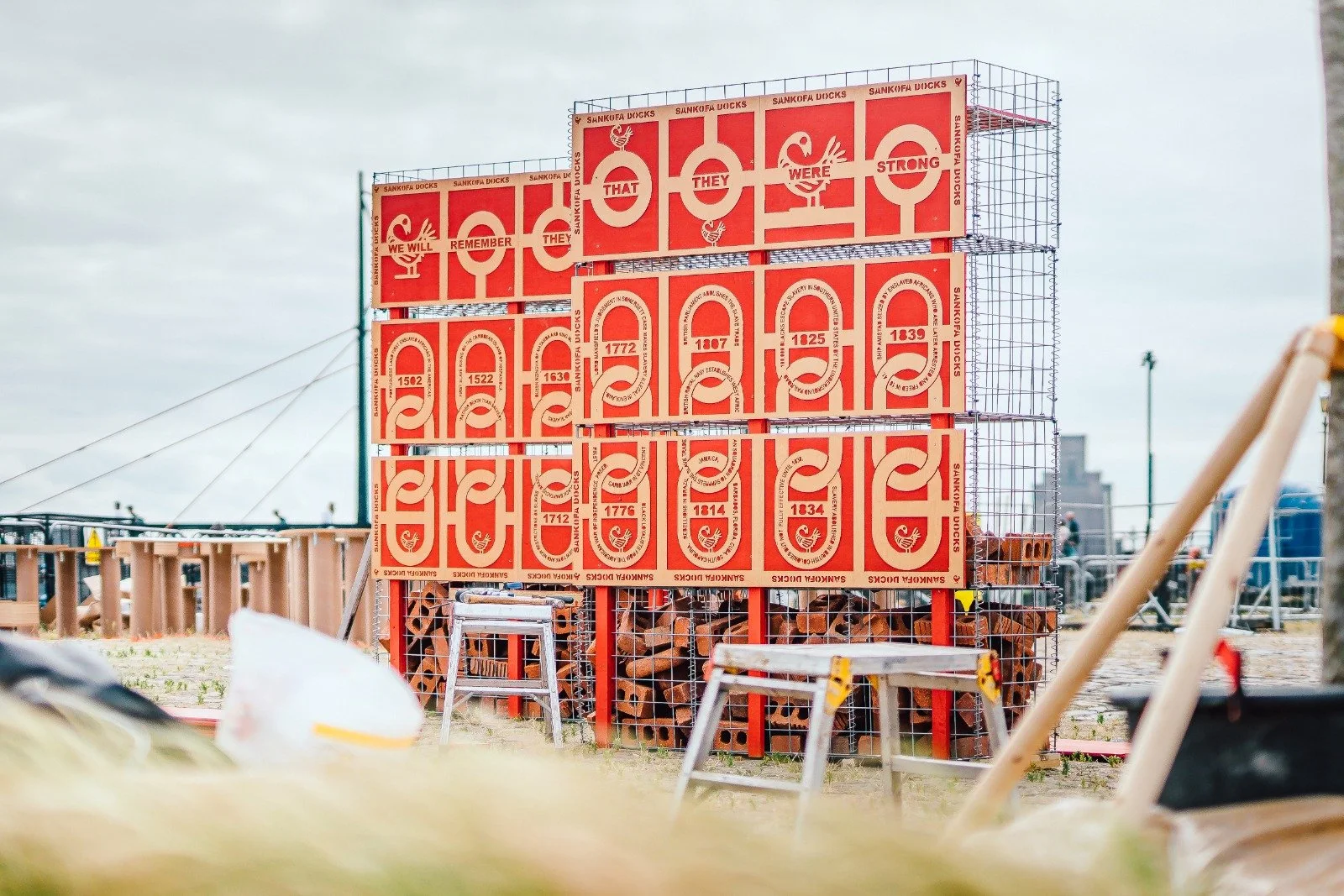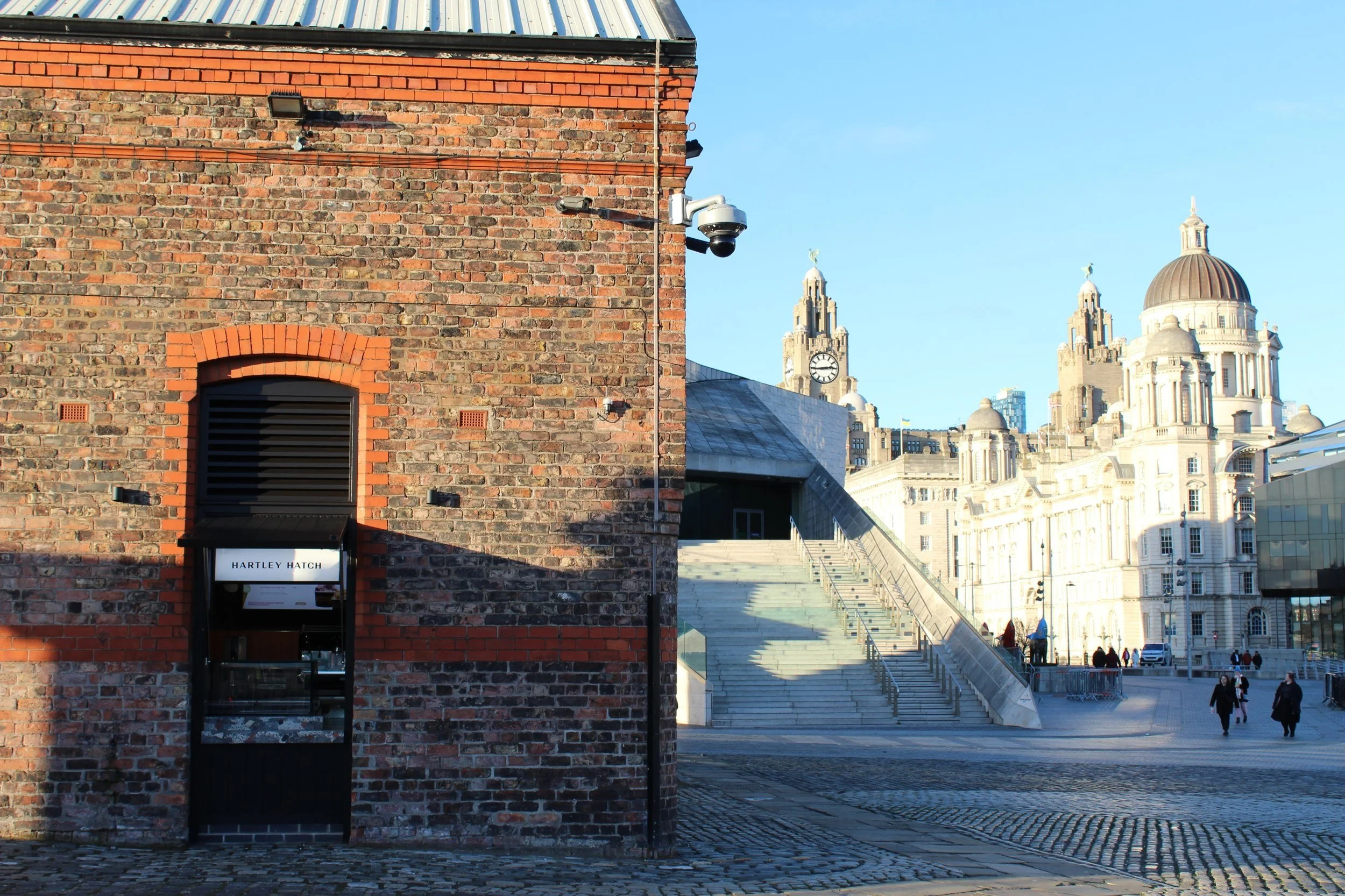Sankofa Docks
A pop-up vision for liverpool's maritime waterfront competition
HSA acted as local architect and insight in a multi-disciplinary design team, including JA Projects and BIG, to deliver Sankofa Docks: a pop-up installation to demonstrate an approach to transforming the waterfront of Liverpool.
The temporary structure was conceived and delivered as part of the National Museums of Liverpool’s (NML) Waterfront Transformation Project competition, which was tasked with finding a diverse and highly-skilled design team to redesign the public realm that borders the Museum of Liverpool, the Merseyside Maritime Museum and the International Slavery Museum.
The site sits at the heart of the former UNESCO World Heritage Site and includes the Canning and Graving Docks, which in the past fitted out, cleaned, and repaired ships used in the transatlantic slave trade. Sankofa Docks is an architectural essay that unpacks Liverpool’s history and asks what a contemporary memorial to international slavery could and should be.
Built over a period of 3 days at the Liverpool waterfront, sourcing the majority of materials within the wider Liverpool City Region, the installation ran for a week over the summer (2021) before being carefully disassembled and the constituent parts rehomed locally across a number of third sector organisations as an extension of the think piece narrative on wealth distribution and highlighting the importance of circular economy principles and reuse on temporary building structures.
The purpose of the Waterfront installations in Stage 2 of the competition was to showcase the shortlisted teams’ ingenuity in design as well as explore their ability to engage with the client, stakeholders and the local community. As such, we delivered a structure that was collaboratively produced and activated with different local communities.
The full team included: BIG, JA Projects, Peter Adjaye, Harrison Stringfellow Architects, CAVA Institute, Beyond the Box, Poor Collective, Futurecity, LDA Design, AKT II, Hilson Moran and Gardiner & Theobald.
We also worked alongside local contributors: Capoeira for All, Scouse Flower House, Park Palace Ponies, Josh Ramsden, Richard Scott and Polly Moseley amongst other groups
Read the full Architects Journal article here.
“We wanted to try to ask what a contemporary memorial to international slavery could and should be”
Related Projects
The Pilotage, Hartley Hatch
Forgotten waterfront space turned into ice cream hatch
Park Palace Ponies
Theatre converted into urban riding school
Growing Sudley Walled Garden
Engagement journey with social enterprise


